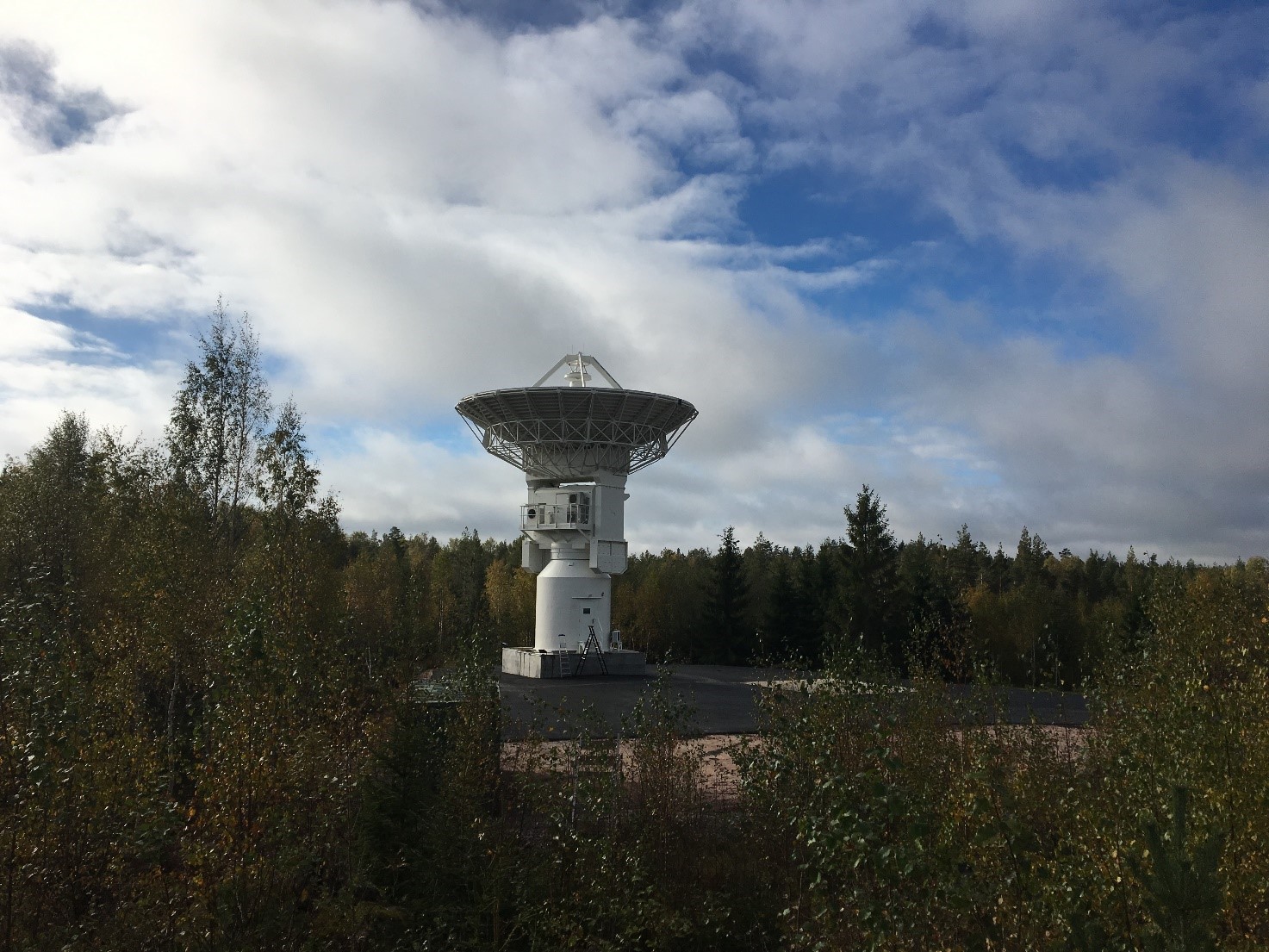VGOS-compatible VLBI Radio Telescope System (VGOS)

Geodetic Very Long Baseline Interferometry (GeoVLBI) is one of the space geodetic observing techniques that contributes to the definition and maintenance of the International Terrestrial and Celestial Reference Frames (ITRF and ICRF), Earth Orientation Parameters (EOP) estimation.
The new generation of GeoVLBI observing technique, named VLBI2010 Global Observing System (VGOS), is developed to achieve: 1-mm position accuracy on global scales, continuous measurements of time series of station positions and Earth orientation parameters, and turnaround time to initial geodetic results of less than 24 hours. Strategies for achieving these goals include an increase in the number of observations per day, reduction of systematic errors, automation of operations and analysis.
A new VGOS compatible radio telescope system has been built at Metsähovi Geodetic Research station during summer 2018. The telescope has fast moving telescope dish with a diameter of the main reflector of 13.2 metres. The telescope will be equipped with a broadband receiver with a working frequency range of 2-14 GHz. The installations of the signal chain components (receiver, digitizer, recorder, etc) are planned to be carried out during 2019. Thereafter the tests and calibration of the complete telescope system will be performed. It is aimed to have the full operational VGOS telescope system by the end of 2021. The new VGOS telescope will be a part of the Global VLBI Observing network, coordinated by the International VLBI Service (IVS).
-
Space Geodesy
Read more about Space Geodesy

